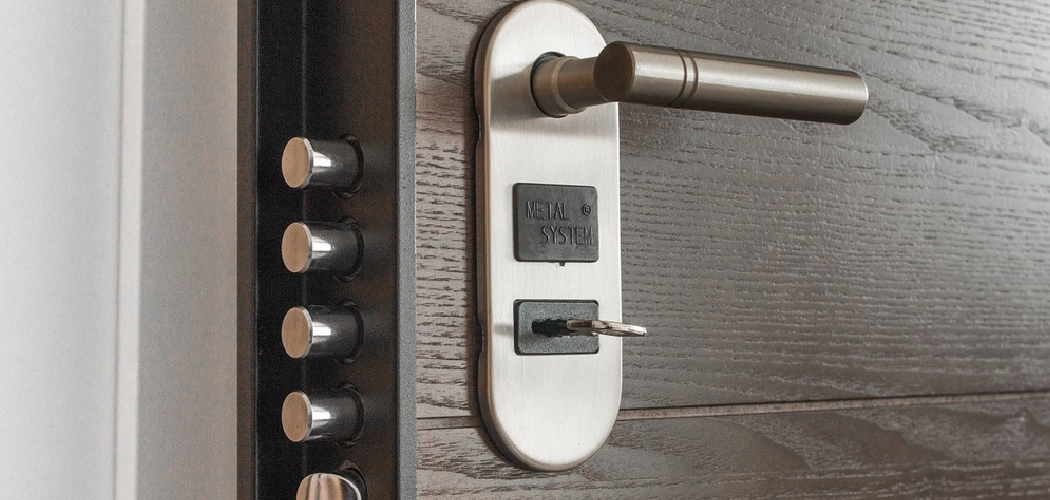Folding doors are a practical and stylish solution that maximizes space while adding functionality to any area. Properly locking a folding door ensures both security and privacy, whether it’s used for closets, partitions, or entryways. In this blog post we will show you how to lock a folding door so that it functions properly. Read on to learn more about which components and tools are needed for the job as well as detailed instructions on completing the task!
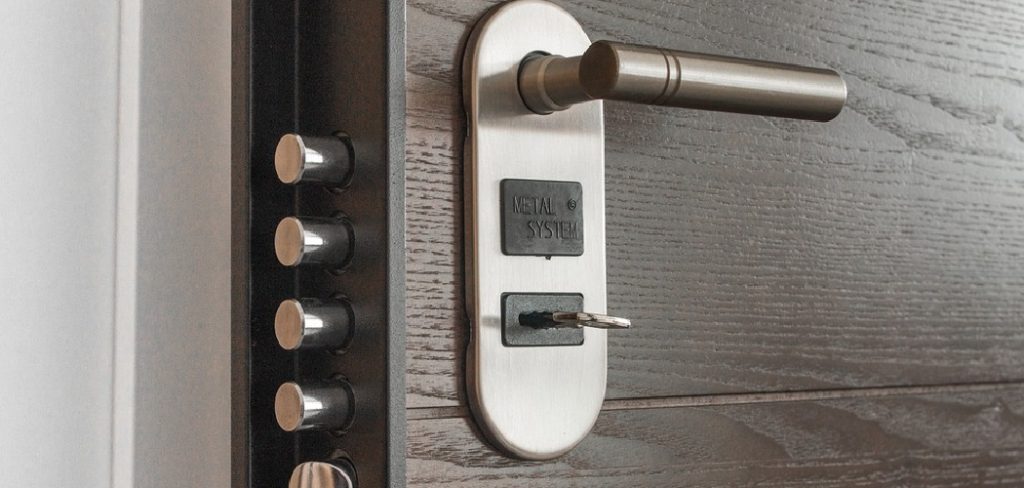
What is a Folding Door?
A folding door, also known as a bi-fold door or accordion door, is a type of door that opens by folding panels back on themselves rather than swinging open. These doors are commonly made from materials like wood, glass, plastic, or metal, and are designed to save space while providing a sleek and modern appearance. Folding doors are often used in areas where traditional doors might be impractical, such as closets, room dividers, or patios. Their versatility and ability to blend into various designs make them a popular choice for both residential and commercial spaces.
Types of Folding Doors
Folding doors come in a variety of styles, materials, and configurations to suit different needs and preferences. Some common types include bi-fold doors, accordion doors, and multi-fold doors.
- Bi-Fold Doors: These are composed of two panels connected by hinges that fold in pairs as they are opened. They are perfect for closets, pantries, and smaller spaces where ease of operation and compact storage are important.
- Accordion Doors: These feature multiple narrow panels that fold together like the pleats of an accordion. They are often made of lightweight materials and are ideal for dividing spaces or providing a temporary barrier.
- Multi-Fold Doors: Designed for larger openings, multi-fold doors consist of numerous panels that fold along a track system. They are often used for connecting indoor and outdoor spaces, allowing for a seamless transition between the two.
Each type of folding door serves a specific purpose, offering functionality and aesthetic appeal to meet the demands of modern interiors and architectural designs.
10 Methods How to Lock a Folding Door
1. Use the Built-in Lock Mechanism
Many folding doors come with a built-in lock mechanism designed specifically to secure the panels when closed. This type of lock is usually located on the side of the door frame or at the top of the door panels. To use this lock, simply pull the door panels together, ensuring they are aligned properly. Then, engage the built-in locking mechanism by turning or sliding the lock into place. This method is simple and efficient, as it is integrated directly into the door’s design.
2. Install a Bolt Lock
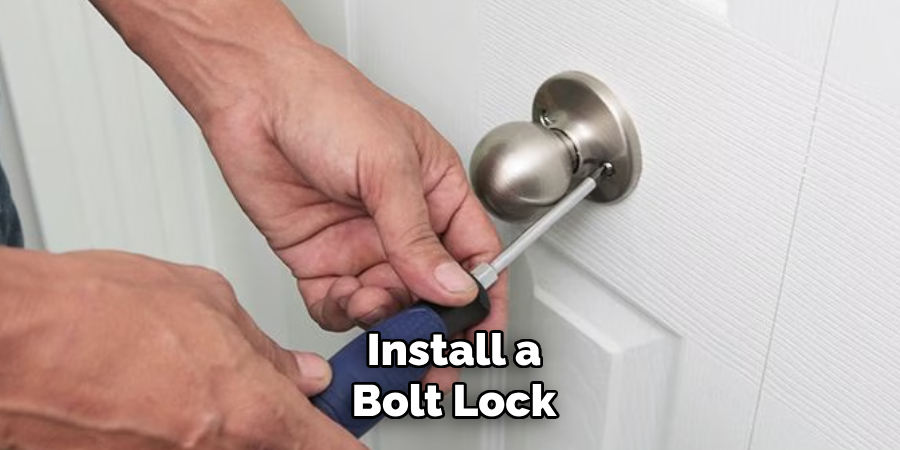
If your folding door does not come with a built-in lock, a bolt lock is an effective alternative. You can install a bolt lock at the top or bottom of the door frame to keep the folding door panels securely in place. A bolt lock works by sliding a bolt into a receiver mounted on the door frame when the door is closed. The bolt can either be manual or automatic, depending on the type of lock you choose. To lock the door, simply slide the bolt into the receiver and ensure it is fully engaged.
3. Add a Surface-Mounted Lock
Another method to secure a folding door is by installing a surface-mounted lock. These types of locks are attached to the surface of the door panels and can be locked with a key or by a sliding latch mechanism. Surface-mounted locks are easy to install and are ideal for providing additional security. When locking the folding door, engage the latch or turn the key to secure the panels, ensuring they cannot be opened without the correct key or unlocking mechanism.
4. Use a Padlock for Extra Security
For those looking for a more temporary or versatile locking solution, using a padlock can provide extra security. This method is especially useful for folding doors that do not have built-in locks or where additional security is needed. To lock a folding door with a padlock, you’ll need to install a hasp or loop on both the door and the door frame. Once the door is closed, place the padlock through the loop or hasp, ensuring that the key is kept safe. This is a highly effective option for additional peace of mind when you need to secure the door.
5. Install a Sliding Bolt or Hook and Eye Lock
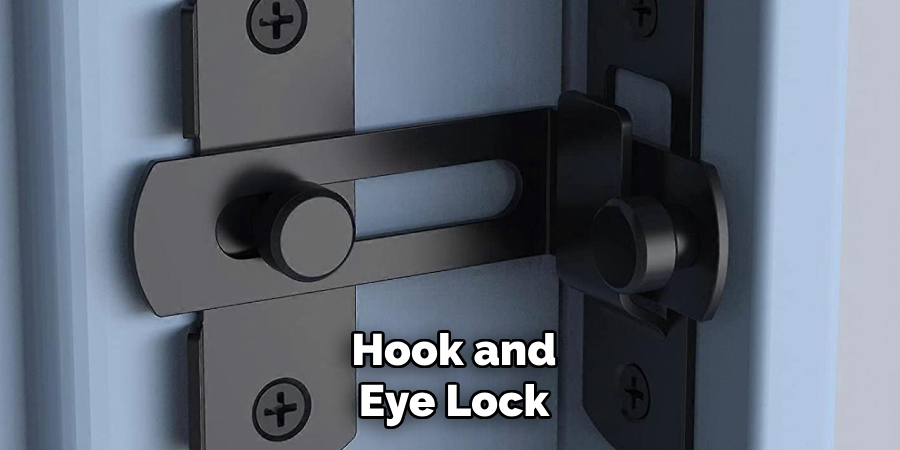
A sliding bolt or hook and eye lock is another great solution for securing folding doors. Sliding bolts are typically installed on the inside edge of the door and are pushed into place manually, while hook and eye locks require you to secure a metal hook onto an eyelet installed on the door frame. Both systems work by blocking the door from opening, making them effective for keeping your folding door securely in place. To lock the door, simply engage the bolt or hook and ensure it is tightly fastened.
6. Use a Chain Lock for Folding Doors
Chain locks are an excellent choice for securing folding doors when additional security is needed. Typically used on exterior doors, chain locks can also be adapted to work with folding doors. To install a chain lock, attach one end of the chain to the door frame and the other to the door panel. When closing the door, secure the chain lock by sliding the chain into a locking mechanism or attaching it to a fastener on the door frame. This method adds an extra layer of security, especially when you’re concerned about forced entry.
7. Install a Magnetic Lock
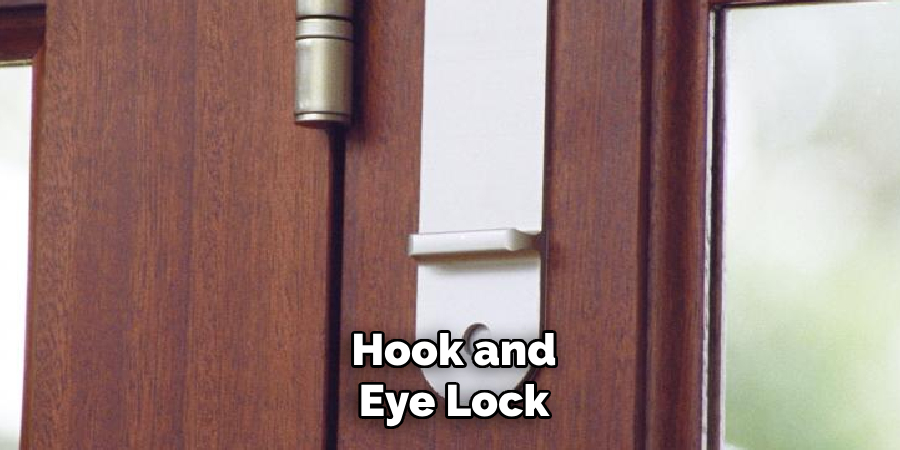
Magnetic locks are a modern and efficient option for locking folding doors. These locks use magnetic fields to keep the door securely closed, often used in commercial settings but suitable for residential use as well. To install a magnetic lock, you’ll need to attach the locking mechanism to the door frame and the corresponding magnet to the door panels. Once the door is closed, the magnets will automatically attract and hold the door panels together. To unlock the door, simply disengage the magnetic field with a key or electronic device. Magnetic locks offer convenience and reliability for frequent use.
8. Use a Mortise Lock
A mortise lock is a type of lock that is installed into the door itself, rather than on the surface. These locks offer a high level of security and are commonly found on heavy-duty doors. To install a mortise lock on your folding door, you’ll need to have the door panel drilled to accommodate the lock housing. Once installed, the mortise lock can be engaged using a key or a latch mechanism to secure the door. This type of lock is effective for high-security applications, as it is difficult to tamper with due to its internal installation.
9. Lock the Top and Bottom Panels with a Hook Lock
Another method for locking folding doors is using hook locks on both the top and bottom of the door panels. This method ensures that the door is fully secured at both ends, preventing it from being pushed open or lifted. To use this method, install a hook lock at the top and bottom of each door panel, and attach corresponding eyelets or rings on the door frame. When the door is closed, simply hook the locks into the eyelets to secure the panels. This approach provides double protection and is effective for both interior and exterior folding doors.
10. Install a Digital Keypad Lock
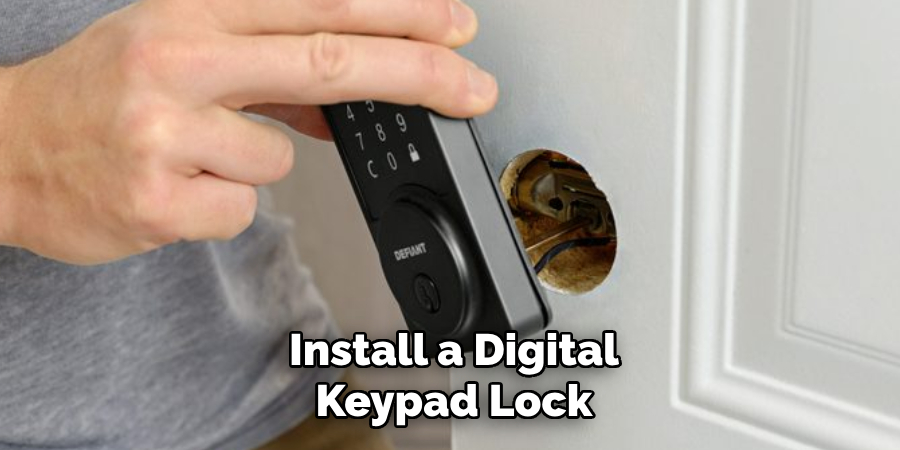
For those seeking a high-tech, keyless entry option for their folding doors, a digital keypad lock can be installed. These locks work by entering a pre-programmed code on a keypad to unlock the door. Digital keypad locks are often used in homes, offices, and rental properties for convenient and secure access. To lock the door, simply press the designated lock button on the keypad. To reprogram the code, you can follow the manufacturer’s instructions to change the entry code as needed. This method eliminates the need for traditional keys and is an excellent option for high-traffic areas.
Things to Consider When Choosing a Digital Keypad Lock
When selecting a digital keypad lock, there are several factors to keep in mind to ensure it meets your needs. First, consider the level of security the lock provides, such as features like tamper alerts, auto-locking functionality, or encryption for code storage. Next, evaluate the ease of use—ensure the keypad is user-friendly and has adequate lighting for nighttime access. Durability is also essential, especially if the lock will be exposed to harsh weather conditions, so look for materials that are water-resistant or rustproof. Lastly, check for compatibility with other smart home systems if you want the lock to integrate seamlessly with your existing devices. These considerations can help you make an informed decision and enhance both convenience and security.
Conclusion
Securing a folding door requires a locking mechanism that is easy to use and offers reliable security. From traditional surface-mounted locks to more advanced options like digital keypad locks, there are various methods you can use to lock your folding door depending on your preferences and security needs. By selecting the right lock for your folding door, you can ensure that your space remains safe and private, providing peace of mind whether you are at home or away. So, there you have it – a quick and easy guide on how to lock a folding door.

